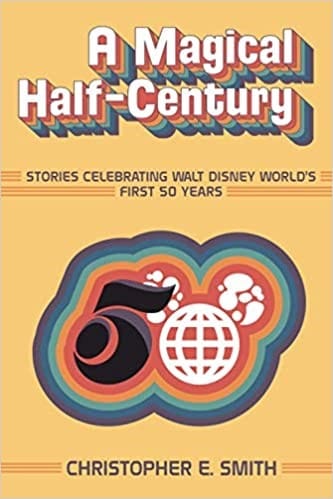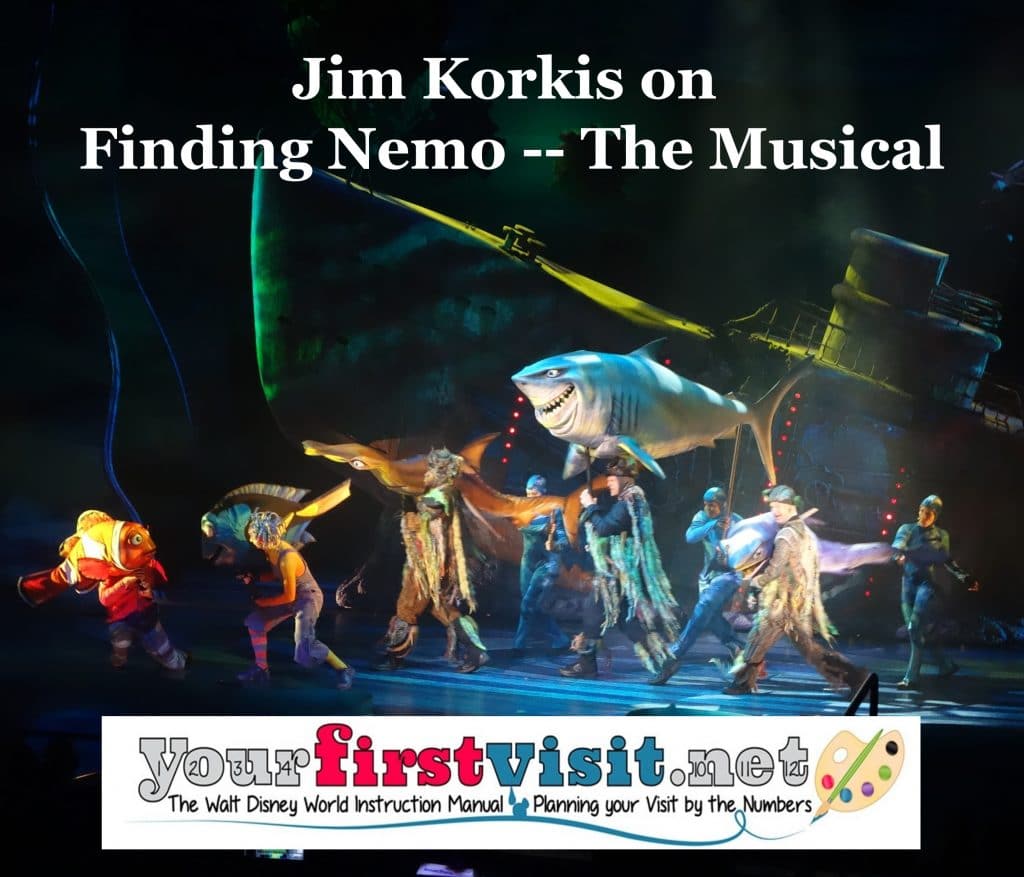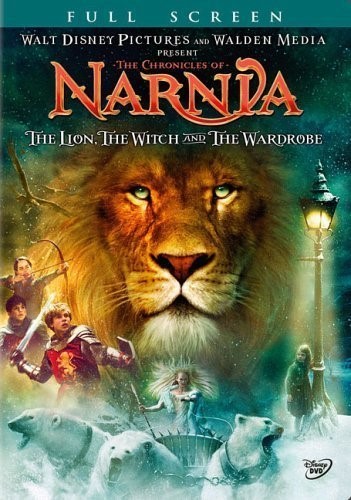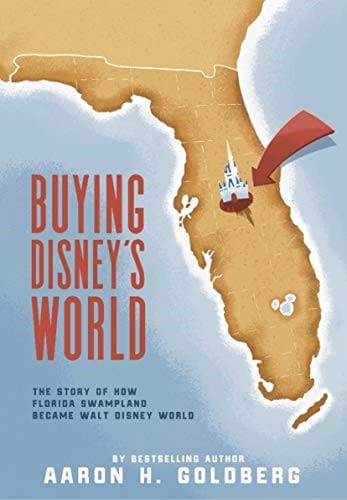Category — A Friday Visit with Jim Korkis
Fridays with Jim Korkis: A Magical Half-Century
Welcome back to Fridays with Jim Korkis! Jim, the dean of Disney historians, writes about Walt Disney World history every Friday on yourfirstvisit.net.
YOUR PERSONAL DISNEY LIBRARY (44)
By Jim Korkis
- A Magical Half-Century by Christopher E. Smith
With Walt Disney World’s 50th anniversary arriving next week, Disney fans will soon have several options to purchase books celebrating the event, including Disney’s official coffee table book, A Portrait of Walt Disney World by Tim O’Day, Steven Vagnini and Kevin Kern, who are all top Disney historians I respect and trust. It will be released at the end of this month but is already a top seller on Amazon pre-orders.
A Magical Half-Century: Stories Celebrating Walt Disney World’s First 50 Years is not meant to be an all-inclusive documentation of Walt Disney World’s fifty years, but rather is sixteen individual stand-alone chapters of topics that caught the author’s attention, from attractions to intellectual properties to weathervanes.
He has a short three and a half page chapter on Imagineer Claude Coats, the only Imagineer to be profiled in that way. However, instead of focusing on Coats’ work for Walt Disney World including mentoring Imagineer Tony Baxter on the 20,000 Leagues Under the Sea attraction, Smith just provides a general overview of Coats’ career.
I wish that if Smith wanted to spotlight Coats, he would have gone to Didier Ghez’s Walt’s People series of books where there an excellent interview with Coats’ son Alan, who also became an Imagineer, about his father and his work for WDW (including a never built World Showcase pavilion not mentioned in this book). In addition, this Didier Ghez series includes other interviews, like one with Baxter who offered insightful comments on Coats and his attraction philosophy that was often in conflict with Imagineer Marc Davis. David Bossert’s extensive biography on Coats is coming out in November and is another book I am eagerly awaiting.
Christopher E. Smith has written three other well-received books about Walt Disney World: two volumes of The Backstories and Magical Secrets of Walt Disney World and The Walt Disney World That Never Was. He is an attorney who with his family has been a frequent visitor to WDW for over three decades.
Smith seems not to be a “numbers guy” –there is no emphasis on dates, statistics or other such data. Smith apparently did not personally interview anyone although he does quote from other sources. Basically, the approach of the book is of a longtime Walt Disney World fan who wrote about what he observed in the park and found in secondary research.
I must admit I find value in the fact that he transcribed some signage and narration even though he does not always know why it is there and what it references. For instance, in one chapter he lists all the inscriptions on the Haunted Mansion tombstones but it not clearly aware that they were written by Imagineer X. Atencio and were meant as “in jokes” about those Imagineers he knew personally. Smith gets the obvious reference but seemingly not the “hidden” joke.
However, Smith deserves recognition for documenting all the signs in the Western scene of the Great Movie Ride, the crew status roster of the Nostromo, and all the quotes in the American Adventure rotunda as well as the paintings among other examples. Many of these items appear but rarely in print.
Well-educated Disney fans of Walt Disney World may not find any new information, but the information that Smith provides is generally accurate and will be of benefit to newer fans not as familiar with these “secrets” who want to learn more about WDW. At 250 pages of content, it is a good value for the money.
* * * * *
Thanks, Jim! and come back next Friday for more from Jim Korkis!
In the meantime, check out his books, including his new books Kungaloosh! The Mythic Jungles of Walt Disney World and Hidden Treasures of Walt Disney World Resorts: Histories, Mysteries, and Theming, much of which was first published on this site.
Follow yourfirstvisit.net on Facebook or Twitter or Pinterest!!
September 24, 2021 No Comments
Fridays with Jim Korkis: Finding Nemo — The Musical
Welcome back to Fridays with Jim Korkis! Jim, the dean of Disney historians, writes about Walt Disney World history every Friday on yourfirstvisit.net.
FINDING NEMO — THE MUSICAL
By Jim Korkis
[Editor’s Note: Finding Nemo – The Musical has not re-opened since its pandemic shutdown in March 2020. Since Jim wrote the below, Disney World has announced that a “reimagined” version will debut in 2022. –Dave]
Finding Nemo – The Musical is a live musical stage show based on Disney/Pixar’s 2003 animated feature Finding Nemo and incorporates puppetry to portray the characters. It is performed at the Theater in the Wild at Disney’s Animal Kingdom. It officially opened January 24, 2007.
Since the original film about Marlin the clownfish trying to find his lost son Nemo with the help of the forgetful Dory did not have any songs, they had to be written for this interpretation of the story. They were written by Kristen Anderson-Lopez and her husband Robert Lopez, who besides writing the songs for the animated feature Frozen, had written scores for several popular Broadway musicals.
They wrote fourteen songs including The Big Blue World that is also used at The Seas with Nemo and Friends pavilion at Epcot.
Co-writer Anderson-Lopez said, “Growing up, I loved the ride with Figment at Epcot. Now, my music gets to be in an Epcot ride. I can’t believe it!”
To condense the feature-length film to just forty minutes, the team focused on a single theme from the movie. “We held on to the central conflict of son and father,” Anderson-Lopez explains. “We kept the same theme — that the world is a beautiful place and you have to take a leap of faith in letting your children go out.”
Anderson-Lopez said that the couple agreed to write the adaptation of “one of our favorite movies of all time” after considering “The idea of people coming in [to see the musical] at age 4, 5 or 6 and saying, ‘I want to do that’….So we want to take it as seriously as we would a Broadway show.”
The puppets were designed by Michael Curry, co-creator of the puppets for Disney’s Broadway smash hit, The Lion King, among many other credits. The oversized sea creatures include Crush who is the size of a VW Bug and the incredible 22-foot-tall Nigel the Pelican.
The show includes a variety of puppetry styles including rod, Bunraku (a Japanese style of puppetry in which the puppeter’s body becomes a part of the puppet) and shadow. Some characters such as Marlin, Nemo and Dory are represented by a live performer while Crush takes four puppeteers and one singer to operate. There is no lip-synching in the show. The songs are performed live.
Performed on a stage flanked by big bubbles, the musical numbers come to life with underwater effects created with innovative lighting, dynamic props, and animated projections in the first major spectacular produced for Walt Disney World by Disney Creative Entertainment.
Tony Award-winning director Peter Brosius directed the show. Brosius is well known for his work as the artistic director for Children’s Theater Company in the Minneapolis/St. Paul, Minnesota area. Tony-nominated choreographer John Carrafa created the dances.
Creative Director Michael Jung said, “I think this show is special for many reasons. It’s the first time in the history of the Walt Disney Company that we’ve taken an animated feature that didn’t have music and created a completely original musical score for it.
“It’s also a unique show for the portfolio we have here at the Walt Disney World Resort, in that it features such elaborate sets, special effects, puppets and unique performers. Sometimes you hear the term ‘triple threat’ because an actor can sing, act and dance. All of our performers do that and in fact, they’re quadruple threats because they need to puppet as well.
“I love the opening number, Big Blue World. I just think it’s a magical exploration of the story. Then there’s Go With the Flow which is performed by Crush and all the sea turtles in the East Australian current that’s a really jubilant ode to The Beach Boys.”
In 2009, the musical won the THEA (Themed Entertainment Association) Award, considered one of the greatest honors in the world of attractions, for Best Live Show.
* * * * *
Thanks, Jim! and come back next Friday for more from Jim Korkis!
In the meantime, check out his books, including his new books Kungaloosh! The Mythic Jungles of Walt Disney World and Hidden Treasures of Walt Disney World Resorts: Histories, Mysteries, and Theming, much of which was first published on this site.
Follow yourfirstvisit.net on Facebook or Twitter or Pinterest!!
September 17, 2021 No Comments
Fridays with Jim Korkis: The Chronicles of Narnia
Welcome back to Fridays with Jim Korkis! Jim, the dean of Disney historians, writes about Walt Disney World history every Friday on yourfirstvisit.net.
THE CHRONICLES OF NARNIA
By Jim Korkis
The Chronicles of Narnia, a book series written by C.S. Lewis, was adapted into a Disney film in 2005, co-produced with Walden Media.
The story focuses on the four British Pevensie siblings (Lucy, Edmund, Susan and Peter), who enter into the fantastical world of Narnia through a magical wardrobe while playing a game of hide-and-seek. They ally themselves with the lion Aslan, the rightful ruler of the land, against the forces of the White Witch who has placed Narnia in an eternal winter.
The film was released on December 9, 2005 and made over $745 million worldwide. This result encouraged Disney to make a sequel, Prince Caspian (2008) with the same cast. Disney had hoped that the films would spark a profitable franchise but when the second film did well but not as well as the first film, Disney stopped further participation.
To help promote the first film, the then Disney MGM Studios (now Disney’s Hollywood Studios) showcased a fifteen minute walk-through attraction entitled “Journey Into Narnia: The Making of the Lion, the Witch and the Wardrobe” on Soundstage 4. It operated from December 9, 2005, to January 1, 2008 when it was replaced by a new walk-through attraction June 27, 2008 promoting Prince Caspian, lasting until September 10, 2011.
Previously, Soundstage 4 had showcased an exhibit devoted the live action 101 Dalmatians (1996 -2002) and later the making of the Haunted Mansion movie (2003). After the Narnia exhibits, it was converted into “The Legend of Jack Sparrow” in December 2012—which lasted until November 6, 2014.
Guests were led into an antechamber with an ornate Wardrobe prop “entrance.” A wardrobe is a tall cabinet for the storage of clothing. The audience was then led through the wardrobe doors into a large room adorned with flocked pine trees, a lamppost, a large tree illuminated with fiber optics, and a large (150″) projection television screen.
The screen displayed a greatly abridged version of The Chronicles of Narnia: The Lion, the Witch and the Wardrobe. At a key point in the four-minute version of the 143-minute movie, the White Witch appeared on a terrace ledge above the crowd and read a few lines from the film telling her subjects to kill any humans. The abbreviated version of the film then continued on the screen, leading into a short preview of The Chronicles of Narnia: Prince Caspian,
Imagineer Theron Skees, who worked on designing the attraction, stated at its opening, “the oversized wardrobe is one of the most dramatic aspects of the new attraction and really helps guests beocme immersed in the film’s magic.
“When you go into the soundstage, you see this oversized wardrobe which gives you the feeling that you’re a child’s size. Then you walk through the wardrobe and find yourself in this frozen forest. It’s quite stunning.
“One of the coolest things that we’re going to have on display is the White Witch’s sleigh, where you first see her in the movie. Guests are so interested in how epic films like this are made, so being able to show them how this happens is a really great thing for Imagineering and the Disney MGM Studios.
“Guests can explore props, costumes and snowy sets from the film including the White Witch’s costume, her magic wand, storyboards, frozen ‘ice’ figures (a dwarf, faun & satyr) and weaponry used in the film’s fight sequences.”
Other items included a clay maquette of the minotaur and Lucy’s costume. When guests left the attraction, faux snow fell–supposedly a final failed attempt by the White Witch.
* * * * *
Thanks, Jim! and come back next Friday for more from Jim Korkis!
In the meantime, check out his books, including his new books Kungaloosh! The Mythic Jungles of Walt Disney World and Hidden Treasures of Walt Disney World Resorts: Histories, Mysteries, and Theming, much of which was first published on this site.
Follow yourfirstvisit.net on Facebook or Twitter or Pinterest!!</p
September 10, 2021 No Comments
Fridays with Jim Korkis: Bibbidi Bobbidi Boutique
Welcome back to Fridays with Jim Korkis! Jim, the dean of Disney historians, writes about Walt Disney World history every Friday on yourfirstvisit.net.
BIBBIDI BOBBIDI BOUTIQUE
In the Disney animated feature Cinderella (1950), the Fairy Godmother appears to help the young girl go to the Royal Ball and with a wave of her magic wand and the magic word “Bibbidi Bobbidi Boo.” The Fairy Godmother transforms the rags Cinderella is wearing into a magnificent ball gown. In addition, she also helps with makeup, hairstyle and accessories.
It was a scene that always made Walt Disney cry because he told people it reaffirmed that if you work hard and have a good heart that you would eventually be rewarded. It was also a scene that resonated with many young girls over the decades who watched it and who wanted to be a princess with a magnificent magical ball gown.
The Disney Princess brand was created in 2000 by then Chairman of Disney Consumer Products Andy Mooney. That first year the brand brought in three hundred million dollars in global retail sales and just three years later, it was generating close to two billion dollars in yearly sales.
So the idea emerged to design a specific location at a Disney theme park to sell princess themed merchandise, and perhaps re-create that magical moment in Cinderella when an ordinary girl becomes a princess.
Senior Concept Designer Jason Grandt designed Bibbidi Bobbidi Boutique. He said his specific goal was to design a location where guests might imagine that Cinderella would show up at any minute.
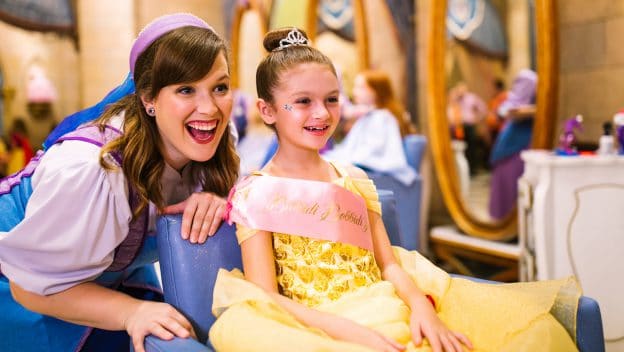
(c) Disney
He added storytelling details like a scroll announcing the Duke’s Ball that evening, the very same event to be attended by Cinderella and Prince Charming. The colors of the curtains in the location were selected to match the colors of Cinderella’s Fairy Godmother.
The first Bibbidi Bobbidi Boutique opened at Downtown Disney (now Disney Springs) on April 5, 2006, followed by ones in Magic Kingdom’s Fantasyland on September 10, 2007, the Tokyo Disneyland Hotel on July 8, 2008, in the former Once Upon a Time – The Disney Princess Shoppe at Disneyland on April 17, 2009, and, with the name My Little Princess, at the Hong Kong Disneyland Hotel on May 23, 2009.
For the first time outside the Disney Parks and Resorts, a Bibbidi Bobbidi Boutique opened November 25, 2013 at the world-famous Harrods department store in London but closed in 2017.
A version of the boutique premiered inside Enchanted Storybook Castle at Shanghai Disneyland on June 16, 2016. A Bibbidi Bobbidi Boutique opened July 1, 2019, in the Storybook Shoppe in Fantasyland at Hong Kong Disneyland, followed by a location at Disney’s Grand Floridian Resort & Spa at Walt Disney World, which opened on August 6, 2019, replacing the Ivy Trellis Salon.
The Disney Cruise Line offers some different options, such as the Star Wars makeovers that tie in with Star Wars Day at Sea sailings, in addition to the traditional princess transformations. The Bibbidi Bobbidi Boutique started with the Disney Fantasy in 2012 and followed by the Disney Magic and the Disney Dream in 2015 and the Disney Wonder in 2016.
Guests (usually girls) ages 3-12 that must be accompanied by an adult receive the royal treatment, getting transformed into a favorite Disney princess with the help of their own Fairy Godmother-in-Training, and take a royal oath.
Several different options are offered, and the price can soar to several hundred dollars especially with the addition of a princess dress. Of course, additional accessories are also available for purchase.
Boys are welcome, and can choose to be transformed into a knight or a prince. The transformation takes roughly about a half hour or more and includes photos and a gift bag of items in a tiny salon decorated with items to suggest an interior room of a castle.
Despite the deluxe price, the experience has proven to be so popular that Walt Disney World is home to three different Bibbidi Bobbidi Boutiques.
* * * * *
Thanks, Jim! And come back next Friday for more from Jim Korkis!
In the meantime, check out his books, including his new books Kungaloosh! The Mythic Jungles of Walt Disney World and Hidden Treasures of Walt Disney World Resorts: Histories, Mysteries, and Theming, much of which was first published on this site.
Follow yourfirstvisit.net on Facebook or Twitter or Pinterest!!
September 3, 2021 No Comments
A Friday Visit with Jim Korkis: Buying Disney’s World
Welcome back to Fridays with Jim Korkis! Jim, the dean of Disney historians, writes about Walt Disney World history every Friday on yourfirstvisit.net.
YOUR PERSONAL DISNEY LIBRARY (43)
By Jim Korkis
- Buying Disney’s World by Aaron H. Goldberg
With Walt Disney World celebrating its milestone 50th anniversary in October, I expect that there will be many books released recounting the creation of the Most Magical Place of Earth.
One of the first ones in this category is Buying Disney’s World, a breezy, cursory look at the birth of Walt Disney World. At roughly 150 pages of text (ten of those pages devoted to a transcription of the narration of the famous Epcot film, and others with full page illustrations that are sometimes interesting and sometimes unnecessary and difficult to read), it omits many people, stories, details, subtleties and facts.
For instance, there is no mention of landscaper Bill Evans who shaped the horticultural atmosphere of the property, or of Bob Gurr who was responsible for many innovative vehicles including a new version of the monorail for WDW, or of Imagineer John Hench, who was responsible for so many design elements, especially a color palette that was different than Disneyland.
In fact, the number of names of people important to the creation of Walt Disney World who are omitted might have easily filled an additional 150 pages.
I was also concerned by the sources the author cited for the book. He seems to rely heavily on Robert Foster’s unpublished manuscript The Founding of a Kingdom but did not consult obvious sources like Since the World Began by Jeff Kurtti or Walt Disney and the Promise of Progress City by Sam Gennawey, both known for their accuracy and valuable perspective.
In fact, off the top of my head, I could probably mention at least another half dozen other books and dozens of easily available documents about the making of Walt Disney World that I could recommend and trust that the author did not clearly use when doing his research on the topic.
Certainly, the Foster manuscript noted above is important, because Foster was the lawyer responsible for the purchasing of all the future Walt Disney World land in Florida, and he had personal contact with many of the key players involved in the Florida project. However, Foster’s was only one perspective of what was going on, and the author has not obviously done any cross-checking to verify the Forster information.
Author Aaron Goldberg has written three other books about Disney topics, and he certainly has his appreciative fan following. The information he provides for the most part is accurate, although it doesn’t always tell the whole story, and personally I was saddened that he didn’t give Roy O. Disney more credit and attention for his sacrifice and leadership in trying to make his younger brother’s dream a reality.
In his haste to finish the book, the author devotes less than three pages to the opening of WDW, the three day dedication ceremony, and the immediate reaction to the new resort. I would assume that many readers would have found those events even more fascinating than some of the previous material.
This brief overview will satisfy some readers, but I look forward to a book with a more diligent recounting of the story of Walt Disney World and better use of existing source material to provide a new perspective.
* * * * *
Thanks, Jim! and come back next Friday for more from Jim Korkis!
In the meantime, check out his books, including his new books Kungaloosh! The Mythic Jungles of Walt Disney World and Hidden Treasures of Walt Disney World Resorts: Histories, Mysteries, and Theming, much of which was first published on this site.
Follow yourfirstvisit.net on Facebook or Twitter or Pinterest!!
August 27, 2021 No Comments
Fridays with Jim Korkis: The Music of Star Wars: Galaxy’s Edge
Welcome back to Fridays with Jim Korkis! Jim, the dean of Disney historians, writes about Walt Disney World history every Friday on yourfirstvisit.net.
THE MUSIC OF STAR WARS: GALAXY’S EDGE
By Jim Korkis
Inside Oga’s Cantina at Star Wars: Galaxy’s Edge, the droid DJ R3X spins favorites from around the universe, and nearly all were written and recorded specifically for the attraction.
Among those tunes are tracks by fictional acts Gaya (performing Oola Shuka), Chaka Mater Laka featuring MW-59 (Batuu Boogie) and Junee Veech featuring Gubz (Bai Tee Tee). There’s even a cut that adapts John Williams’ familiar Cantina Band theme from Star Wars: A New Hope.
Adam Dorn was handpicked to take on the task of remixing the tune synonymous with Obi-Wan Kenobi and Luke Skywalker’s first meeting with Han Solo and Chewbacca inside the Mos Eisley cantina.
Dorn told media representatives that he vividly remembers being six years old and sitting in a movie theater in Philadelphia watching Star Wars: A New Hope for the first time. “When the cantina scene came on, I was transfixed. I will always remember this piece of music and every time I hear it, I still smile.”
Original composer John Williams listened to Dorn’s version and commented, “Well, that was perfectly lovely.”
Matt Walker, executive in charge of music for Walt Disney Imagineering, said that since the Batuu outpost didn’t exist in the films, it would need “its own score, one that belonged to it, but of course lived within the universe of John Williams’ music for the films but the last thing we wanted was to feel like you’re walking in and hearing, you know, any kind of music that was being pumped into the land as background.”
Instead, the aural backdrop of the Black Spire Outpost on the planet of Batuu is the buzz of space bugs, radios tuned into pod-race broadcasts interspersed with in-universe commercials, and X-wings flying overhead. Like in real life, music is faintly heard coming from apartments, the market, or piped into restaurants and restrooms.
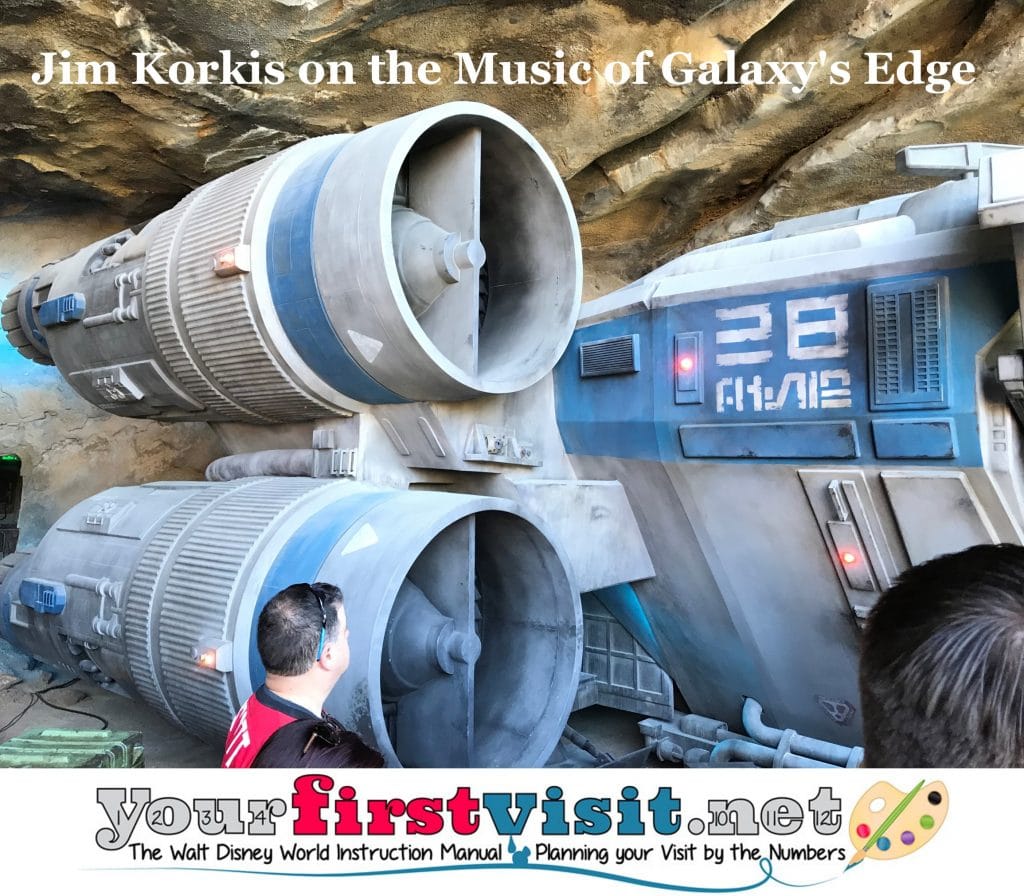
Yaron Spiwak, senior music producer at Imagineering, said that for the songs in the cantina, “We took several types of world music, like a Chinese erhu, and mixed it with African drums, and on top of that put something Middle Eastern, and then put it in a Pro Tools session and filter it and reverse it, and then basically if you can’t recognize the instrument, or the style, that’s how we kind of made it out-of-worldly. Some of the aliens have like 20 fingers, or some of them have weird embouchures or mouths, so obviously they would play instruments differently than we do. It was kind of fun to imagine how that would sound.”
Walker added, “We started with the known alien languages established by Lucasfilm, and that was the springboard. And then we wanted to encourage the writers to have fun and to create their own alien languages. But then of course we would have to make sure that those alien languages that were created by our writers didn’t inadvertently mean something questionable in Brazilian Portuguese or other languages.”
Spiwak stated, “We had great partners in Lucasfilm, and we partnered with Margaret Kerrison [managing story editor at Walt Disney Imagineering], Matt Martin [creative executive, Lucasfilm Story Group], and we had two great guys from LucasFilm, Matt Wood [supervising sound editor, sound designer, Lucasfilm] and David Collins, that helped us write the lyrics for some of these songs. Especially the songs in Huttese. And also we had a Jawa song called Utinni, so that’s in the Jawa language.”
The overall goal, Walker said, was to create an authentic-sounding exotic locale, “weaving in musical textures, being careful not to overuse John’s thematic material. It’s a very textural approach to the source music.”
* * * * *
Thanks, Jim! For more on the music of Galaxy’s Edge, see this. And come back next Friday for more from Jim Korkis!
In the meantime, check out his books, including his new books Kungaloosh! The Mythic Jungles of Walt Disney World and Hidden Treasures of Walt Disney World Resorts: Histories, Mysteries, and Theming, much of which was first published on this site.
Follow yourfirstvisit.net on Facebook or Twitter or Pinterest!!
August 20, 2021 No Comments

